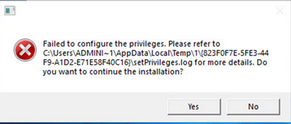System Requirements
This section introduces the hardware requirements, network connectivity requirements, and more prerequisites for deploying a two-server system.
▪Network Connectivity Requirements
Reference Specification
The two-server deployment requires one Windows server for applications and one Linux server for the database. Both physical machines and virtual machines are supported.
Environment |
NetBrain Component |
Machine Count |
CPU 1) |
Memory |
Hard Disk |
Operating System |
|---|---|---|---|---|---|---|
≤1000 nodes |
Application Server |
1 |
4 Physical Cores 1) |
16GB |
200GB ▪HDD 3) ▪SSD 5) |
▪Windows Server 2012/2012 R2 (Standard/Datacenter Edition), 64-bit ▪Windows Server 2016/2019 (Standard/Datacenter Edition), 64-bit |
Database Server |
1 |
4 Physical Cores 1) |
16GB 2) |
300GB ▪HDD 4) ▪SSD 5) |
▪Red Hat Enterprise Linux Server 7.5/7.6/7.7/7.8/7.9/8.2/8.3, 64-bit ▪CentOS 7.5/7.6/7.7/7.8/7.9/8.2/8.3, 64-bit ▪Oracle Linux 7.7/7.8/7.9/8.2/8.3, 64-bit |
|
1001~2000 nodes |
Application Server |
1 |
4 Physical Cores 1) |
32GB |
200GB ▪HDD 3) ▪SSD 5) |
▪Windows Server 2012/2012 R2 (Standard/Datacenter Edition), 64-bit ▪Windows Server 2016/2019 (Standard/Datacenter Edition), 64-bit |
Database Server |
1 |
4 Physical Cores 1) |
32GB 2) |
300GB ▪HDD 4) ▪SSD 5) |
▪Red Hat Enterprise Linux Server 7.5/7.6/7.7/7.8/7.9/8.2/8.3, 64-bit ▪CentOS 7.5/7.6/7.7/7.8/7.9/8.2/8.3, 64-bit ▪Oracle Linux 7.7/7.8/7.9/8.2/8.3, 64-bit |
Notes:
1) If hyper-threading is enabled, one physical core equals to two logical processors; in a virtual environment, the number of vCPUs required is twice the number of physical cores (as listed in the table).
2) Allocating at least half of the RAM amount for swap space on your Linux server is required to provide the necessary additional memory when the RAM space has been exhausted.
3) For good performance of data processing and caching, it is recommended to install the Application Server on a machine equipped with Solid State Drive (SSD) when managing up to 5000 nodes.
4) The required hard disk space must be exclusively reserved for NetBrain. For better performance, it is recommended to install the MongoDB on a machine equipped with Solid State Drive (SSD), or Hard Disk Drive (HDD) RAID-10.
5) If the Intent Based Automation (IBA) license is activated, both Application Server and Database Server must be equipped with Solid State Drive (SSD)
Network Connectivity Requirements
Source |
Destination |
Protocol *) and Port Number **) |
|---|---|---|
Thin Client |
Application Server |
HTTP/HTTPS (80/443) |
Application Server |
Database Server |
TCP 5672/6379/9200/27017/27654/15672 |
Application Server |
Ansible Agent (add-on) |
TCP 9098 |
Application Server |
Live Network |
ICMP/SNMP/Telnet/SSH/REST API |
Database Server |
Application Server |
TCP 9099 |
Note: *) If SSL was enabled for any component including MongoDB/ElasticSearch/Redis/RabbitMQ/License Agent/Front Server Controller/Ansible Agent/Auto Update Server (within Web API Server), the SSL protocol should be added to firewall rules to enable SSL connection between servers.
Note: **) The port numbers listed in this column are defaults only. The actual port numbers used during installation might be different.
Deployment Prerequisites
The following requirements must be satisfied before setting up your NetBrain system:
▪The operating system must be installed with an English-language version (not language packs).
▪When installing NetBrain servers, comply with your company security policy to set the passwords and archive them for further reference.
▪NetBrain servers use hostnames to identify and communicate with each other. Make sure each server has a unique hostname.
▪Add all the NetBrain installation folders and files (on both Windows and Linux) to the allow list of antivirus software for routine scans, and keep the TCP connections unblocked between NetBrain components.
▪If the machine's firewall is turned on, make sure the firewall rules allow traffics to all the ports and protocols that will be used by the NetBrain system.
▪Special Requirements for Client Machine
oIt is recommended to deploy the NetBrain Smart CLI on the same machine where the browser-based thin client is used, and the machine needs to meet the following minimum system specifications: •4 Physical CPU Cores (If hyper-threading is enabled, one physical core equals to two logical processors; in a virtual environment, the number of vCPUs required is twice the number of physical cores) •8GB RAM oEnsure to reserve at least 50% system capacity for the satisfactory performance of NetBrain Browser-based Thin Client and Smart CLI Application. |
▪Special Requirements for Windows Server
▪Special Requirements for Linux Server
oUsers with root privileges of the machine are required to implement the installation. oIt is highly recommended to store the data files and log files of NetBrain servers into separated disk partitions. Make sure each partition has enough disk space. •More than 100GB free space in the directory where the data files of MongoDB/Elasticsearch will be saved. •More than 50GB free space in the directory where the log files of MongoDB/Elasticsearch will be saved. •More than 180GB free space for the Front Server PostgreSQL data path. |
See also:

